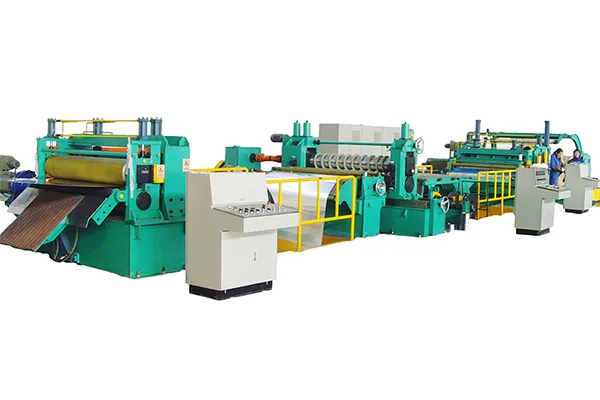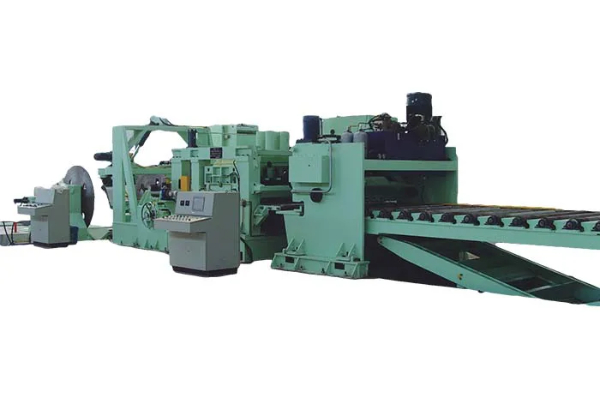
Troubleshooting Common Issues with Sheet Metal Cutting Machines
- By:Metmac
- 2024-07-26
- 173
In the realm of precision engineering, sheet metal cutting machines reign supreme, shaping metal sheets with unparalleled accuracy. However, even these machines can occasionally encounter glitches, threatening the integrity and efficiency of your operation. Here, we delve into the most common issues that plague sheet metal cutting machines and provide expert guidance on how to troubleshoot them swiftly.
1. Inaccurate Cutting
Misaligned Blade: Ensure that the cutting blade is properly aligned with the sheet metal. Slight misalignments can lead to imprecise cuts.
Dull Blade: Inspect the cutting blade for any signs of wear or dullness. A dull blade will struggle to cut cleanly and can result in uneven edges.
Uneven Workpiece Surface: Check if the sheet metal is securely clamped and free from any bumps or irregularities. An uneven surface can cause the blade to skip or cut at different depths.
2. Excessive Noise
Loose Parts: Inspect the machine for any loose screws, bolts, or other components that may be vibrating. Tighten all loose parts securely.
Damaged Bearings: Lubricate the bearings regularly to minimize friction and noise. Worn or damaged bearings can cause excessive noise and vibration.
Misaligned Gears: Ensure that the gears are correctly aligned and properly lubricated. Misaligned gears can generate excessive noise and wear.
3. Slow Cutting Speed
Insufficient Power Supply: Check if the machine is receiving an adequate power supply. Low voltage can cause the machine to operate slowly.
Hydraulic System Issues: If the machine uses a hydraulic system, inspect the fluid level, pressure, and any filters. Low fluid or clogged filters can slow down the cutting process.
Clogged Nozzles: For plasma cutting machines, ensure that the nozzles are clean and free from debris. Clogged nozzles can obstruct the plasma stream and reduce cutting speed.
4. Safety Concerns
Sparks and Flames: Keep the machine area well-ventilated and equipped with fire extinguishers. Sparks and flames can ignite the surrounding materials.
Sharp Blades: Handle the blades with utmost care. Wear appropriate safety gear, including gloves and eye protection, while operating the machine.
Electrical Hazards: Ensure that all electrical connections are secure and meet safety standards. Electrical malfunctions can pose serious risks.
By understanding the causes and symptoms of these common issues, you can effectively troubleshoot and resolve them, minimizing downtime and ensuring the optimal performance of your sheet metal cutting machine.
-
Sheet Metal Working Machines: The METMAC Advantage for Complete Fabrication Excellence
2025/12/03 -
Hydraulic Sheet Cutting Machine: Unmatched Power and Reliability for Demanding Fabrication by METMAC
2025/12/03 -
CNC Sheet Metal Bending Machine: The Pillar of Precision Fabrication with METMAC
2025/12/03 -
Laser Stainless Steel Cutting Machine: Precision, Purity, and Performance by METMAC
2025/12/03
-
Advanced Sheet Metal Rolling, Laser Cutting, and Folding Machines for Precision Fabrication
2025/10/31 -
High-Performance Sheet Metal Bending and Cutting Machines for Modern Fabrication
2025/10/31 -
High-Quality Sheet Metal Equipment for Sale: Efficient Solutions for Modern Manufacturing
2025/10/31 -
High-Performance Sheet Metal Equipment for Sale: Forming and Shearing Solutions for Modern Fabrication
2025/10/22
-
A Guide to the Latest Innovations in Sheet Metal Folding Machines
2024/11/29 -
Key Features to Consider When Investing in a Sheet Metal Folding Machine
2024/11/28 -
Enhancing Precision with Advanced Sheet Metal Folding Machines
2024/11/27 -
How to Choose the Right Sheet Metal Folding Machine for Your Workshop
2024/11/26







